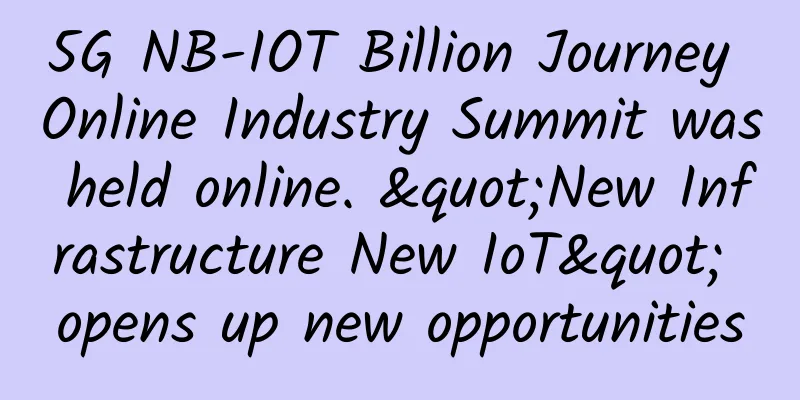Forecast of cellular network development trends in 2017

|
The new year of 2017 will continue the major trends of the wireless network industry last year and further develop them. As a prelude to the arrival of 5G, now is the time for mobile network operators (MNOs) to lay the foundation for the future and manage past investments. Densification, virtualization and optimization are the main ways for mobile network operators to achieve their goals. At the same time, network convergence will also play a key role in the future 5G network as an emerging trend. Densification The overall shift in the wireless industry is away from cell towers and toward street poles, and away from large facilities and toward smaller devices. Densification is about adding more sites to city streets and large buildings where users are concentrated. As a result, urban cell site deployments will continue to receive a lot of attention. I think 2017 will see a significant increase in these deployments. In addition, the indoor wireless network market will continue to transform from an operator-funded model to an enterprise-funded model. Although it is not the first time to be mentioned, the market is indeed still in the process of transformation. At present, the main challenge of the transformation is how to make mobile network operators and enterprises reach a consensus on roles and responsibilities, deployment quality and other related aspects. CommScope will continue to deepen its partner network to better serve the wireless network needs of enterprise customers. Densification also includes adding more spectrum to existing sites. For macro network base station antennas, we will continue to place more ports on the antenna (up to 8, 10 or 12 ports) to push more capacity to existing sites. To this end, the evolution to 4.3-10 size connectors is very important. CommScope believes that the millimeter wave spectrum currently being explored by the industry will play a role in fixed wireless access networks. Virtualization Everything about wireless networks is moving toward virtualization. The first step in capacity virtualization is to deploy a centralized radio access network (C-RAN), which puts baseband processing into a centralized location that can serve multiple cell sites. A U.S. mobile network operator has deployed C-RAN in key urban center areas, connecting three macro sites and 30 metropolitan cell sites via fiber. In the future, this deployment will achieve true C-RAN, or Cloud-RAN, which will enable network capacity to be moved to hotspot locations at any time of the day. The C-RAN architecture enables operators to use smaller cabinets and platforms at the base of cell towers due to the reduction of equipment required at the edge of the network. To meet this market need, CommScope offers pre-assembled steel platforms with cabinets and generators installed. Mobile network operators will likely save some costs through lower power requirements and leasing costs under the C-RAN model. optimization Operators remain highly focused on improving the user experience, and how to best use open spectrum is an issue that needs to be addressed in 2017. The most basic first step is to offload traffic to Wi-Fi, but this does not give mobile network operators the quality control they desire. LTE access on open spectrum and assisted access on proprietary spectrum make it possible for operators to control the use of open spectrum. Mobile network operators can not only reap the benefits of offloading traffic, but also control the experience. In my opinion, there will eventually be a situation where Wi-Fi, other technologies on open spectrum and technologies on proprietary spectrum coexist, especially inside buildings. It can be said that managing spectrum will continue to be a focus of the industry to minimize network performance issues. Network Convergence In the long run, network convergence is both an emerging trend and a hot topic in the past 10 years. Although it is a cliché, network convergence will really play a role in the future 5G network. Network convergence means that wired and wireless networks are integrated to provide users with the best services. Fiber networks will carry more wireless network traffic and extend from the core network to the edge of the network. The best one-mile application will be wireless or fiber loops, and millimeter waves will compete with fiber for shorter distribution loops in the RAN. Compared with fiber networks, users prefer wireless networks, but it will be a combination of microwave, millimeter wave wireless networks and fiber that connect customers from the edge of the network back to the core. While densification, virtualization, optimization and network convergence are not new trends, they will deepen in 2017 with the deployment of more cell sites, capacity, spectrum and fiber. The key word in the wireless industry has always been “more”: users want more bandwidth, mobile network operators need more capacity, and CommScope is at the forefront of the industry developing more solutions. Although the overall trends in 2017 appear similar to last year, I expect this year to see significant progress in laying the foundation for 5G. |
<<: Abandon 2.4GHz! This is the new Wi-Fi standard 802.11ax
>>: What does the expansion of 4G mean for big data?
Recommend
AkkoCloud Germany/UK CN2 GIA replenishment annual payment starts from 299 yuan, 300-600M bandwidth
AkkoCloud is a merchant that mainly provides VPS ...
NWCU's Smart New Campus 2.0, layout of "IT unified smart operation and maintenance" (Part 2): operation and maintenance organization management and process management
Xi’an University of Architecture and Technology i...
Combining VXLAN and EVPN
EVPN is one of the hottest network technologies i...
What network automation certification options are available today?
Networks are increasingly reliant on software and...
Three considerations to spark innovation on the modern web
Today’s networks may not adapt well to changing n...
Unveiling the network architecture of the 6G era! Six major design concepts, three bodies, four layers, and five aspects in one article
The development of network architecture is one of...
One year later than expected! The global microwave transmission market is expected to enter a multi-year growth period in 2021
Recently, Jimmy Yu, vice president and analyst at...
What factors should be considered when designing a high-performance and high-concurrency network system? (10,000-word article)
[[271144]] "There are few things in the worl...
If you think 5G will solve all your IoT challenges, think again
5G stands for the next generation of mobile commu...
With HTTP protocol, why do we need Websocket?
[[428410]] WebSocket is a full-duplex communicati...
Remote workers are greener, but the technology they use still has a carbon cost
According to foreign media TechCrunch, affected b...
5G is coming, will you still port your number to another network?
According to the unified deployment of the Minist...
CloudCone Easter Promotion: $15/year KVM-1GB/30GB/3TB/Los Angeles Data Center
CloudCone offers three special VPS packages for t...
ColoCrossing 25% off: $2.96/month - 1GB/25G SSD/20TB@1Gbps/Los Angeles & New York data centers
Last month, the blog shared information about Col...









